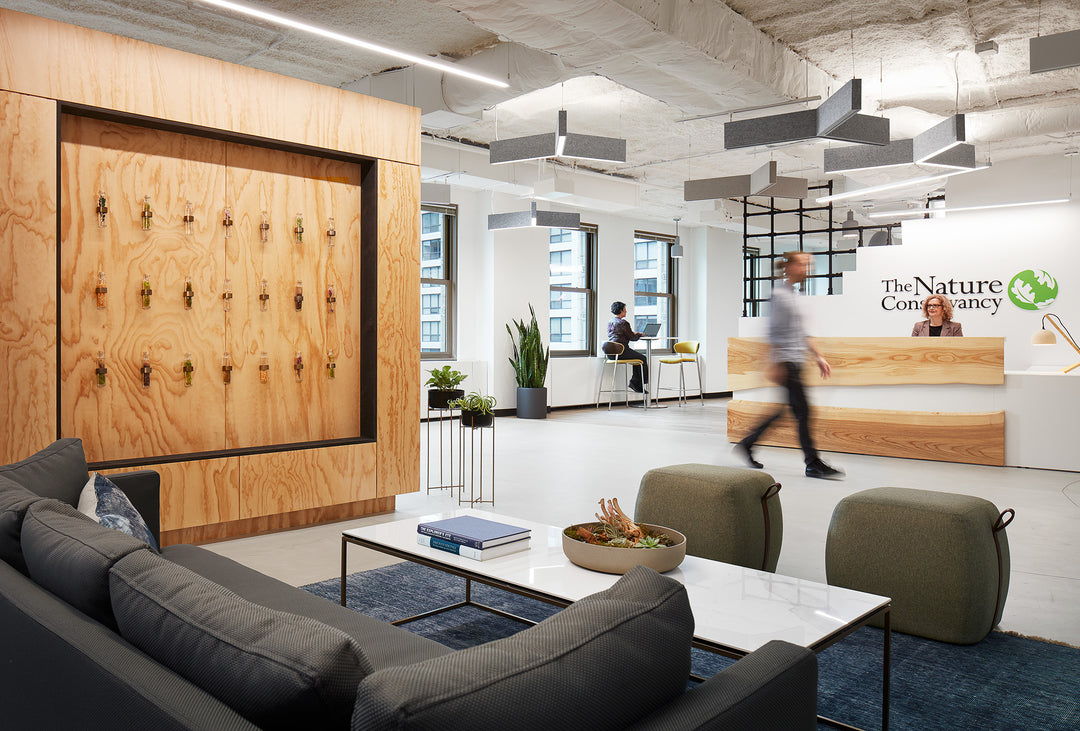Office Chair Innovations From the Last 50 Years
Office chairs haven’t always looked how they do today. In fact, they barely even existed less than half a century ago. As the frequency of office work rose over the years, so did the need to do something different when it came to how people sat at their desks. So, manufacturing companies, automotive engineers, and even NASA all took up the task of designing chairs with optimal support and health in mind. Here are some of the top office chair innovations from the past 50 years and how these products have evolved to meet modern comfort and health standards.
Pneumatic Lumbar Support
Believe it or not, many of the initial innovations for modern office chairs originated from the automotive world. After all, drivers needed prolonged support just like those working at a desk, and the business known as RECARO sought to bridge the gap. In 1997, they introduced the first automotive chairs with incorporated pneumatic lumbar support to provide a firm foundation for the area between the lumbar curve and a person’s rear. By providing this extra support, engineers were able to target one of the most common types of physical pain that occurs from spending too long behind the wheel.
Shortly thereafter in 1976, the Herman Miller office brand integrated this aspect into their own chairs with revolutionary foam padding. With this extra cushion to take stress off the back and tailbone when sitting at a desk, workers found that they experienced reduced discomfort throughout their day. From this point, chair design became just as much about comfort and health as appearance.
Distributive Seat
It was also during this time that Herman Miller explored the viability of the distributive seat. Lower back pain stems from an increased amount of pressure on the spine and tailbone. Over time, the nerve endings in these areas enflame, causing a radiating achiness when you stand or shift in your spot. Distributive seating seeks to prevent this by redistributing more of your weight away from these bones. Rather than half of your weight resting on your back and rear, the extra cushioning in these seats distributes it across the rest of the chair’s surface area. This, combined with the introduction of lumbar support, significantly improved the comfort of team members during their workday.
Adjustable Height and Back Configurations
The development of adjustable height and back configurations for office seating didn’t happen that long ago, either. With the rise of workplace and personal computers in the 1980s and 1990s came an increase in the amount of time workers and homebodies alike spent sitting down. Though many chairs had pneumatic lumbar support by this point, they were still primarily designed for individuals who spent all day pushing paper rather than typing.
The first task chairs had additional support in the back and allowed individuals to adjust their height to best correspond to their needs. This way, they could maintain a healthy posture and reduce pain, even when sitting for much longer than was traditionally standard. These chairs could take on several different back angles as well, depending on the chosen setting. This way, the individual’s back remained supported regardless of how they wanted to sit.
Mesh Backing
Another important office chair innovation from the last 50 years was the development of the stylish and supportive mesh backing design. Fully breathable and flexible, this material helped further support a person’s back and lower spine while maintaining comfort in even incredibly warm temperatures. Even while appearing minimalistic, this mesh was also very durable and the foundation for many modern office chair designs to this day. Best of all, it made office chairs lighter in weight, making them easier to move about the workplace.
Stylish Colors and Designs
It was also around the nineties when office chair manufacturers began taking a stylistic approach to making new models. The blank, industrialized setting of the traditional office environment was on its way out, and businesses began looking for ways to set themselves apart from competitors. Office design became a way to showcase what a company had to offer without blatant advertisement, and it was vital that they hade the chairs to match the theme. From mesh backing to fabric upholstery to leather, office chairs utilized several materials and came in a series of different shapes. Some include classic, low-back task chairs, high-back office seating, and even stools for communal settings.
Sustainable Chair Materials
But it wasn’t until more recently that that concept of the sustainable office chair took hold on the industry. With thousands of pounds in office furniture ending up in landfills every year, finding ways to reduce the impact on the environment was critical. As such, rather than create new pieces with fresh materials, companies like Rework have set about rebuilding old models with recycled resources. This way, fewer furniture items find their way into local landfills, and businesses have access to quality pieces at a reduced cost.
Ergonomic Alignment
The most important innovation to discuss is the concept of ergonomic alignment in office seating. While aspects like lumbar support and adjustable heights have been around for several decades now, there hasn’t been a singular science that ties them all together. As the science behind the proper alignment and comfort of the human body, ergonomics exists to help an individual maintain their health and prevent workplace injury. Rather than incorporate individual characteristics to make a certain chair effective, manufacturers approach the design process with an overall ergonomic focus in mind. So, you and your team members can remain comfortable and productive regardless of the job and how long you sit each day.
If you’re in need of ergonomic and stylish office seating for your professional team, Rework provides you with just that. From used office stools to desk chairs and reception seating, our inventory contains a variety of models at a fraction of their standard price. This way, you can furnish your entire office without sacrificing appearance or functionality.
Need help deciding on certain pieces? No problem. Rework’s team of talented office designers can help walk you through your options and make the proper choice for your business. We know the ins and outs of ergonomic and innovative seating so that you can feel confident in your final decision. Give us a call today so that we can get you the perfect furnishings for your needs.





